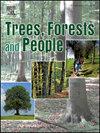利用机会在印度尼西亚高档森林景观恢复
IF 2.9
Q1 FORESTRY
引用次数: 0
摘要
印度尼西亚必须加强森林景观恢复(FLR)工作,以实现其雄心勃勃的目标,包括到2030年从森林吸收的碳超过排放的碳。我们审查了印度尼西亚森林退化和FLR工作、法规和资金的现状,以确定扩大规模的机会。我们制定了一个框架,以更好地协调FLR资金和福利,并指导全球和各国私营部门提供更广泛的捐款,以资助和实施这些努力。到目前为止,FLR项目主要由政府机构领导和资助,其主要目标是恢复关键土地,以减轻洪水和山体滑坡。仅靠这些不太可能达到实现国家和全球恢复承诺所需的规模。提高印尼森林覆盖率的一个机会是促进自然恢复,恢复4300万公顷的次生林。然而,利用这一机会需要政府改变对退化地区的定义,扩大目前的森林砍伐禁令,将次生林包括在内,提高土地权属的清晰度,并修订和精简政府法规,以促进森林资源恢复中的非政府行为体。现有的两项制度安排,即社会林业和生态系统恢复特许权,可以扩大到目前程度的至少2 - 3倍,同时增加可用于FLR的国有林地面积。这种安排可以通过碳市场、捐助者和投资者的直接资助以及公司运营内部的补偿计划从国际和国内来源获得资金。此外,政府、非政府组织、学术行为体和地方社区之间需要更好地协调,以制定健全、公平和长期的FLR计划。本文章由计算机程序翻译,如有差异,请以英文原文为准。
Harnessing opportunities to upscale forest landscape restoration in Indonesia
Indonesia must upscale forest landscape restoration (FLR) efforts to meet its ambitious targets, including absorbing more carbon from forests than emitted by 2030. We review the status quo of forest degradation and FLR efforts, regulations, and funding in Indonesia to identify opportunities for upscaling. We develop a framework to better align FLR funding and benefits and guide broader contributions from global and national private sectors to finance and implement these efforts. Until now, FLR projects primarily have been led and funded by government institutions with the main goal of rehabilitating critical lands to mitigate flooding and landslides. These alone are unlikely to achieve the scale required to meet national and global restoration pledges. One opportunity to upscale FLR in Indonesia is facilitating natural recovery to restore the >43 million ha of secondary forest. However, harnessing this opportunity requires a paradigm change in the government definition of degraded areas, expanding the current deforestation moratorium to include secondary forests, improving land tenure clarity, and revising and streamlining government regulations to facilitate non-governmental actors in FLR. Two existing institutional arrangements, social forestry and ecosystem restoration concessions, could be expanded to at least 2–3x the current extent, along with increasing the state forest land area available for FLR. Such arrangements could be funded from international and domestic sources through carbon markets, direct funding from donors and investors, and compensation schemes within company operations. Moreover, better coordination is needed among governmental, non-governmental, and academic actors and local communities to develop robust, equitable, and long-term FLR programs.
求助全文
通过发布文献求助,成功后即可免费获取论文全文。
去求助
来源期刊

Trees, Forests and People
Economics, Econometrics and Finance-Economics, Econometrics and Finance (miscellaneous)
CiteScore
4.30
自引率
7.40%
发文量
172
审稿时长
56 days
 求助内容:
求助内容: 应助结果提醒方式:
应助结果提醒方式:


